Table of Contents
- Introduction
- Understanding Bio-Mimicry in Materials Science
- Evolution of Bio-Mimetic Aluminum Alloys
- Design Principles and Nature-Inspired Structures
- Research and Development: Methods and Findings
- Real-World Applications and Case Studies
6.1 Case Study: Offshore Wind Turbine Structures - Broader Industry Implications and Future Trends
- Challenges and Opportunities
- Conclusion
- References
- Meta Information
1. Introduction
Materials science has taken bold strides by merging natural design with modern engineering. Bio-mimetic aluminum alloys serve as a prime example of nature-inspired innovation. By studying organic structures—from the resilient pattern of a leaf’s vein system to the strength of an insect’s exoskeleton—researchers develop alloys that incorporate time-tested, natural strategies. These alloys offer enhanced strength, reduced weight, and improved resistance to wear and corrosion.
This article examines how bio-mimetic aluminum alloys are designed, produced, and applied in various sectors. Instead of relying solely on traditional metallurgical techniques, engineers now integrate nature’s blueprints to achieve superior performance. The approach involves modifying the microstructure of the alloy and reconfiguring its phases based on biological principles. In doing so, the performance of these materials in demanding environments is significantly improved.
Current research, documented in multiple peer-reviewed journals, shows that incorporating nature-inspired geometries can lead to remarkable improvements in mechanical properties. With applications in aerospace, automotive, renewable energy, and even consumer electronics, bio-mimetic aluminum alloys are changing the face of modern engineering.
Elka Mehr Kimiya is a leading manufacturer of Aluminium rods, alloys, conductors, ingots, and wire in the northwest of Iran equipped with cutting-edge production machinery. Committed to excellence, we ensure top-quality products through precision engineering and rigorous quality control.
In the following sections, the article delves deep into bio-mimicry, the evolution of these alloys, detailed design principles, research methodologies, and real-world applications, offering a comprehensive view of how nature inspires advanced materials.
2. Understanding Bio-Mimicry in Materials Science
Bio-mimicry, also known as biomimetics, is the study and imitation of natural models to solve complex human problems. In materials science, it involves analyzing the intricate details of natural structures and replicating their efficiency in engineered materials. Nature, refined over millions of years of evolution, offers a repository of design strategies that have been optimized for performance, resilience, and sustainability.
Nature as a Blueprint
Natural systems display an extraordinary ability to balance conflicting demands such as strength, flexibility, and low weight. For instance, the honeycomb structure found in beehives provides maximum strength with minimal material use. This structure is known for its high strength-to-weight ratio and has inspired the design of lightweight yet robust materials. Similarly, seashells exhibit a layered structure that effectively dissipates stress and prevents crack propagation. Such examples have encouraged researchers to explore these natural models as a source of inspiration for modern alloy design.
Mechanisms of Bio-Mimetic Design
At the heart of bio-mimetic design is the concept of translating natural architectures into engineered materials. This involves several key approaches:
- Geometric Optimization: Nature’s structures often follow optimized geometries. Engineers use computational models to create lattice frameworks that distribute loads evenly. The resulting designs help to avoid stress concentration and improve overall strength.
- Microstructural Engineering: By mimicking the arrangement of components in natural materials, researchers can tailor the microstructure of aluminum alloys. Adjustments in grain size, phase distribution, and the inclusion of reinforcing particles have been shown to boost mechanical properties such as tensile strength and fatigue life.
- Functional Grading: In many natural tissues, properties change gradually rather than abruptly. This graded structure helps manage stress across different regions. Engineers replicate this concept in alloys, creating components with surface layers optimized for wear resistance and cores designed for toughness.
Data Table: Comparative Mechanical Properties
| Property | Traditional Aluminum Alloy | Bio-Mimetic Aluminum Alloy | Improvement (%) |
|---|---|---|---|
| Tensile Strength (MPa) | 310 | 395 | ~27% |
| Yield Strength (MPa) | 270 | 345 | ~28% |
| Fatigue Resistance (cycles) | 1.0 x 10<sup>6</sup> | 1.3 x 10<sup>6</sup> | ~30% |
| Corrosion Resistance (rating) | 3 | 4.5 | ~50% |
Table 1: Comparative mechanical properties as verified by experimental studies across multiple research institutions.
Sustainability Through Bio-Mimicry
One of the critical advantages of adopting bio-mimetic designs is the positive impact on sustainability. Traditional alloy production often involves high energy consumption and significant waste generation. By achieving equivalent or superior performance with reduced material use, bio-mimetic alloys offer a pathway to more sustainable manufacturing practices. Less raw material and lower energy input directly translate to a smaller environmental footprint, aligning well with global efforts toward greener production techniques.
Real-World Example: Automotive Engineering
The automotive industry is a significant beneficiary of bio-mimetic innovation. Automotive components are increasingly designed to be lighter without sacrificing safety or durability. In one example, a study demonstrated that incorporating bio-mimetic lattice structures in vehicle chassis reduced overall weight by 15% while improving fatigue resistance. These improvements lead to enhanced fuel efficiency and reduced emissions, making them essential in the drive toward sustainable transportation.
3. Evolution of Bio-Mimetic Aluminum Alloys
The evolution of bio-mimetic aluminum alloys is a fascinating journey that spans decades of research and innovation. It represents a shift from conventional metallurgical practices to an approach that harnesses biological inspiration to solve modern engineering challenges.
Historical Overview
Traditional aluminum alloys have been a staple in engineering since the early 20th century, primarily through the use of alloying elements like copper, magnesium, and silicon to enhance basic properties. However, as technological demands have evolved, the limitations of these alloys have become more evident. The idea of integrating bio-mimetic principles emerged as researchers sought ways to overcome issues like material fatigue, stress concentration, and inefficient weight distribution.
Key Milestones in Development
The development of bio-mimetic aluminum alloys can be divided into several key phases:
- 1980s – Discovery Phase: Initial studies focused on understanding natural structures. Early research into the architectures of bones, seashells, and plant tissues laid the groundwork for future applications.
- 1990s – Simulation and Modeling: With the advent of powerful computational tools, researchers began to simulate natural structures using finite element analysis (FEA). This period marked the beginning of translating nature’s geometries into digital models for alloy design.
- 2000s – Prototype Production: Early prototypes of bio-mimetic aluminum alloys were manufactured using advanced processing techniques. Initial tests revealed promising improvements in stress distribution and energy absorption.
- 2010s – Industrial Integration: As the performance benefits became more apparent, industries such as aerospace and automotive started adopting these alloys. The focus shifted toward refining the manufacturing processes to ensure consistency and scalability.
- 2020s – Modern Advancements: Current research is dedicated to integrating smart functionalities, such as self-healing capabilities and temperature responsiveness, into bio-mimetic alloys. There is also a strong emphasis on sustainable processing methods to reduce environmental impact.
Data Table: Timeline of Key Developments
| Decade | Key Developments | Impact on Alloy Performance |
|---|---|---|
| 1980s | Discovery of nature’s structural blueprints | Initiated the concept of bio-mimicry in engineering |
| 1990s | Advancements in computational modeling and simulation tools | Enabled accurate prediction of alloy behavior |
| 2000s | Production of initial bio-mimetic alloy prototypes | Demonstrated significant improvements in strength |
| 2010s | Adoption in high-performance industries | Validated performance in real-world applications |
| 2020s | Integration of smart functionalities and sustainable methods | Advanced durability and reduced environmental impact |
Table 2: Milestones in the evolution of bio-mimetic aluminum alloys and their corresponding impacts on performance.
Integration of Biological Insights
The success of bio-mimetic aluminum alloys lies in the deep integration of biological principles. For example, the hierarchical structure of bone has inspired the development of alloys that exhibit a balance between rigidity and flexibility. Detailed studies show that mimicking the multi-scale architecture of bone leads to materials that can dissipate energy more efficiently, reducing the likelihood of sudden failure under high stress. Researchers have also noted that incorporating gradient structures, similar to those seen in natural tissues, improves the overall toughness and durability of the material.
Advancements in Manufacturing Techniques
Modern manufacturing methods have been crucial to the evolution of bio-mimetic alloys. Additive manufacturing, commonly known as 3D printing, has enabled the creation of complex lattice structures that were once impossible with conventional casting. This technology allows engineers to fabricate parts with highly controlled microstructures and customized geometries, ensuring that the bio-inspired design is replicated with precision. The increased control over the microstructure not only enhances mechanical properties but also reduces the need for extensive post-processing, thereby cutting down on waste and energy consumption.
Expanding the Research Horizon
Over the years, interdisciplinary collaboration has played a central role in advancing the field. Materials scientists, biologists, mechanical engineers, and computer scientists have pooled their expertise to tackle the challenges of replicating nature’s complexities. This collaborative approach has accelerated progress, allowing for rapid prototyping, extensive testing, and refinement of design principles. The collective efforts have led to breakthroughs that continuously push the boundaries of what bio-mimetic aluminum alloys can achieve.
4. Design Principles and Nature-Inspired Structures
Designing bio-mimetic aluminum alloys involves embracing the elegance and efficiency of natural structures. Engineers draw inspiration from diverse sources in nature, ensuring that every design element serves a specific function and contributes to the overall performance of the alloy.
Geometric Optimization and Lattice Structures
Natural structures are inherently efficient. The hexagonal honeycomb pattern, for instance, is known for its high strength-to-weight ratio and minimal material use. Engineers replicate such lattice geometries at the micro-level within aluminum alloys. The creation of these intricate frameworks allows for an even distribution of stress, reducing the risk of localized failure. In practical terms, this means that an alloy can be lighter yet maintain a high level of strength, which is crucial in applications where weight reduction is a key design goal.
Advanced computer-aided design (CAD) tools are used to generate these optimized geometries. The designs are then incorporated into the alloy using precision manufacturing techniques, ensuring that the intended structure is maintained from concept to final product. The outcome is a material that mimics the naturally optimized patterns found in living organisms, resulting in improved load distribution and durability.
Microstructural Tailoring
Microstructural tailoring is another cornerstone of bio-mimetic design. Nature provides many examples where gradual transitions in structure lead to remarkable material properties. One classic example is the structure of a nutshell, where the outer layers are hard and resistant to impact, while the inner layers provide toughness and flexibility. Engineers mimic this gradient by varying the microstructure of aluminum alloys.
The process involves carefully controlling factors such as grain size, phase distribution, and the inclusion of reinforcing particles. Research indicates that reducing the grain size in aluminum alloys can lead to a significant increase in tensile strength, typically in the range of 15–20%. Additionally, a uniform dispersion of reinforcement particles prevents the development of weak points that can lead to premature failure. By creating a microstructure that reflects the gradual transitions found in nature, bio-mimetic alloys gain enhanced properties that allow them to perform reliably under diverse and often extreme conditions.
Functional Grading and Adaptive Structures
Functional grading is inspired by natural materials that change properties gradually. This design approach allows for materials to adapt to different stress regimes. For example, an automotive component may require a surface that is highly resistant to wear while the inner core remains ductile enough to absorb shocks. By implementing a graded design, engineers can tailor the properties of the alloy to meet specific demands in various regions of a single component.
The benefits of functional grading are particularly evident in components that face a combination of mechanical stresses and environmental challenges. The gradual change in material properties helps to dissipate stress more evenly and reduces the risk of cracking under cyclic loads. As a result, components manufactured with bio-mimetic principles exhibit extended lifespans and lower maintenance requirements.
Data Table: Key Design Parameters and Their Impact
| Design Parameter | Nature-Inspired Concept | Impact on Alloy Performance | Quantitative Improvement (Approx.) |
|---|---|---|---|
| Lattice Geometry | Honeycomb structures | Even stress distribution, reduced weight | 25-30% improvement in weight-to-strength ratio |
| Grain Size Refinement | Bone microarchitecture | Enhanced tensile strength and fatigue life | 15-20% increase in tensile strength |
| Functional Grading | Gradual tissue transitions | Improved wear resistance and adaptability | 10-15% extension in component lifespan |
Table 3: Key design parameters in bio-mimetic aluminum alloys and their performance benefits as validated by experimental studies.
The Role of Computational Modeling
Computational modeling underpins much of the progress in bio-mimetic design. Engineers use finite element methods (FEM) to simulate the behavior of these alloys under real-world conditions. Through iterative simulations, they can refine lattice geometries, microstructural arrangements, and grading techniques to achieve optimal performance. Such models have been cross-checked against experimental data, ensuring that predictions align with observed improvements in properties such as stress distribution and fatigue resistance.
Interdisciplinary Collaboration
The field of bio-mimetic aluminum alloys benefits immensely from interdisciplinary collaboration. By merging the insights of biologists, materials scientists, and engineers, a holistic approach to design and validation is achieved. These collaborations foster innovation and accelerate the translation of natural principles into practical applications. The resulting materials are not only efficient but also robust and reliable, ready to meet the diverse challenges of modern engineering.
Real-World Implications
The principles described above have far-reaching implications. Industries such as aerospace, automotive, and renewable energy are already experiencing the benefits of materials that are lighter, stronger, and more resilient. By reducing the weight of components while maintaining or enhancing strength, bio-mimetic aluminum alloys contribute to improved fuel efficiency, lower emissions, and increased overall safety. The designs inspired by nature are proving that traditional materials can be transformed through thoughtful innovation, paving the way for the next generation of engineering solutions.
5. Research and Development: Methods and Findings
Research into bio-mimetic aluminum alloys encompasses extensive laboratory experiments, rigorous computational simulations, and pilot-scale production trials. This section details the various methodologies used in the development process and highlights the key findings that have emerged from these studies.
Experimental Methods
Researchers employ a suite of experimental techniques to assess the performance of bio-mimetic alloys. Standard tests include tensile strength measurements, fatigue testing, and corrosion resistance assessments. These tests provide insights into how the material behaves under different types of stress and environmental conditions.
Tensile Testing
Tensile tests are conducted by subjecting samples to increasing loads until failure occurs. Bio-mimetic alloys consistently demonstrate a 25–30% increase in tensile strength when compared to traditional aluminum alloys. These tests reveal not only the overall strength but also how well the alloy handles stress before reaching its yield point.
Fatigue Testing
Fatigue tests simulate conditions where materials are exposed to repetitive loading. In controlled experiments, bio-mimetic aluminum alloys have endured up to 1.3 million cycles before failure, compared to approximately 1.0 million cycles for conventional alloys. This improvement is significant for applications that involve cyclic stress, such as in automotive engines or aircraft structures.
Corrosion Testing
Corrosion testing evaluates the alloy’s resistance to degradation when exposed to corrosive environments, such as saltwater or acidic conditions. Enhanced microstructural tailoring in bio-mimetic alloys often results in a rating improvement from 3 to 4.5 on standardized corrosion tests, indicating better performance and longer lifespan in harsh conditions.
Data Table: Summary of Experimental Findings
| Test Type | Parameter Measured | Traditional Alloy Value | Bio-Mimetic Alloy Value | Improvement (%) |
|---|---|---|---|---|
| Tensile Test | Tensile Strength (MPa) | 310 | 395 | ~27% |
| Fatigue Test | Endurance Cycles | 1.0 x 10<sup>6</sup> | 1.3 x 10<sup>6</sup> | ~30% |
| Corrosion Test | Corrosion Resistance | Rating 3 | Rating 4.5 | ~50% |
| Impact Resistance | Energy Absorption (J) | Standard baseline | Enhanced by design | Significant gain |
Table 4: Experimental results comparing traditional and bio-mimetic aluminum alloys from various studies.
Computational Modeling and Simulation Studies
Advanced simulation tools such as finite element analysis (FEA) are critical for predicting the behavior of bio-mimetic designs. Engineers simulate stress distribution, deformation, and failure mechanisms under various conditions. These computational studies have confirmed that bio-mimetic modifications can reduce stress concentrations by nearly 35%, thus enhancing overall structural performance. The iterative process of simulation and validation allows researchers to fine-tune alloy compositions and microstructural configurations.
Case Studies and Research Findings
Aerospace Applications
A leading aerospace research center conducted extensive studies on bio-mimetic aluminum alloys for use in aircraft components. By integrating lattice structures inspired by natural honeycomb patterns, they achieved a 20% reduction in component weight. In addition, the improved energy absorption capabilities were validated through rigorous impact testing, demonstrating enhanced safety margins for aircraft structures.
Automotive Component Durability
In automotive engineering, researchers examined the performance of bio-mimetic alloys in engine components. The findings revealed a 15% increase in fatigue life, attributed to the optimized microstructure and even stress distribution. Improved uniformity in material properties resulted in fewer stress fractures, directly translating into extended component lifespans and more predictable performance under extreme conditions.
Offshore Wind Turbine Applications
Offshore wind turbines face continuous challenges from dynamic loads, corrosive marine environments, and harsh weather conditions. A detailed study on bio-mimetic aluminum alloys in this setting revealed:
- A 30% improvement in fatigue resistance.
- A 40% reduction in corrosion-related degradation.
- Enhanced vibrational damping leading to lower operational stresses.
| Test Type | Traditional Alloy Performance | Bio-Mimetic Alloy Performance | Improvement (%) |
|---|---|---|---|
| Fatigue Resistance | 1.0 x 10<sup>6</sup> cycles | 1.3 x 10<sup>6</sup> cycles | ~30% |
| Corrosion Resistance | High degradation rate | Significantly reduced | ~40% |
| Vibration Damping | Moderate performance | High performance | Significant |
Table 5: Offshore wind turbine test results comparing traditional and bio-mimetic aluminum alloys.
The enhanced performance in these applications underscores the transformative potential of bio-mimetic designs. By leveraging nature-inspired structures, industries can achieve longer service intervals, reduced maintenance costs, and improved overall efficiency.
Integration of Data Analytics
Modern research in this field also integrates advanced data analytics. Machine learning models predict the impact of various microstructural modifications on mechanical performance. This analytical approach reduces experimental time and cost by identifying promising alloy compositions and configurations early in the development process.
6. Real-World Applications and Case Studies
The practical applications of bio-mimetic aluminum alloys extend across multiple industries, with tangible benefits observed in aerospace, automotive, construction, and renewable energy sectors. Detailed case studies illustrate how nature-inspired designs enhance performance in real-world environments.
Aerospace Industry
Aerospace applications demand materials that combine light weight with superior mechanical strength. The reduction in weight afforded by bio-mimetic lattice structures leads to significant fuel savings and improved aircraft performance. In one notable study, aircraft fuselage panels produced using bio-mimetic alloys demonstrated a 20% reduction in weight while offering increased impact resistance. The enhanced energy absorption capabilities ensure better performance during turbulence and impact events, contributing to higher safety standards.
Automotive Engineering
In the automotive sector, reducing weight without compromising strength is crucial. Bio-mimetic aluminum alloys have been used to manufacture engine components, chassis parts, and body panels. These components not only exhibit a longer fatigue life but also contribute to overall vehicle efficiency by lowering fuel consumption. One comprehensive study highlighted that vehicles incorporating bio-mimetic components saw measurable improvements in acceleration and braking performance due to reduced overall weight and improved structural integrity.
Construction and Infrastructure
Structural components in construction, such as bridges, building facades, and earthquake-resistant frames, benefit from the enhanced properties of bio-mimetic alloys. The materials’ resistance to fatigue and environmental degradation makes them ideal for use in long-term infrastructure projects. Engineers have reported that structures using bio-mimetic aluminum alloys demonstrate increased durability and reduced maintenance needs over their lifecycle.
Offshore Wind Turbine Structures
Case Study: Offshore Wind Turbine Structures
Offshore wind turbines operate in one of the most challenging environments due to constant exposure to wind, waves, and saltwater. In a dedicated study, researchers fabricated turbine components from bio-mimetic aluminum alloys featuring embedded lattice structures inspired by cellular patterns in natural tissues. These components underwent a series of rigorous tests designed to simulate the harsh conditions of a marine environment.
Methodology:
Components were subjected to cyclic loading tests, salt spray corrosion testing, and vibrational analysis. Finite element simulations were performed to predict stress distribution and potential failure points. The results were then compared with those from conventional alloy components used in similar applications.
Results:
- Fatigue Resistance: Bio-mimetic alloys endured approximately 1.3 x 10<sup>6</sup> cycles, marking a 30% improvement over traditional alloys.
- Corrosion Resistance: The innovative microstructure reduced corrosion-related degradation by nearly 40%.
- Vibration Damping: Enhanced energy absorption capabilities resulted in significantly improved damping characteristics, leading to lower amplitude vibrations during simulated storm conditions.
| Test Type | Traditional Alloy Performance | Bio-Mimetic Alloy Performance | Improvement (%) |
|---|---|---|---|
| Fatigue Resistance | 1.0 x 10<sup>6</sup> cycles | 1.3 x 10<sup>6</sup> cycles | ~30% |
| Corrosion Resistance | High degradation rate | Significantly reduced | ~40% |
| Vibration Damping | Moderate performance | Superior performance | Significant |
Table 5: Summary of test results for offshore wind turbine components using bio-mimetic aluminum alloys.
Implications:
The study clearly indicates that the application of bio-mimetic design in offshore wind turbines can extend the service life of critical components while reducing maintenance intervals. The economic benefits are substantial, with potential reductions in operational costs and improvements in energy production efficiency. As the renewable energy sector continues to grow, these materials are likely to play an increasingly vital role.
Medical Devices and Consumer Electronics
Beyond heavy industries, bio-mimetic aluminum alloys are finding applications in high-precision sectors such as medical devices and consumer electronics. In medical devices, the enhanced mechanical properties of these alloys ensure that surgical instruments and implant components perform reliably under repeated use. Similarly, in consumer electronics, the combination of lightweight design and high strength improves the durability and user experience of products like laptops, smartphones, and wearable technology.
Sports Equipment
Another emerging area is sports equipment, where the balance between light weight and structural integrity is paramount. Bicycles, tennis rackets, and even advanced training gear benefit from the integration of bio-mimetic designs. Athletes and manufacturers alike have noted that equipment produced with these advanced alloys offers improved performance characteristics without the penalty of added weight.
Broader Industry Impact
The adoption of bio-mimetic aluminum alloys across multiple sectors reflects a broader shift in material science and engineering. As industries confront the dual challenges of performance enhancement and environmental sustainability, the integration of nature-inspired designs offers a robust solution. Enhanced performance, longer service life, and reduced material waste combine to deliver economic and environmental benefits that are difficult to achieve with traditional alloys.
7. Broader Industry Implications and Future Trends
The future of bio-mimetic aluminum alloys is bright. As research continues and new manufacturing techniques are developed, these materials will likely become even more integral to modern engineering.
Advancements in Additive Manufacturing
Additive manufacturing, or 3D printing, plays a pivotal role in advancing bio-mimetic design. Future trends point toward even greater control over microstructures, allowing for highly customized and intricate designs. As 3D printing technologies mature, manufacturers can expect to reduce production times and costs, making bio-mimetic alloys more accessible for large-scale applications.
Integration of Smart Materials
The next phase in the evolution of bio-mimetic aluminum alloys is the integration of smart functionalities. Researchers are exploring the incorporation of self-healing properties, temperature responsiveness, and even embedded sensors to monitor real-time performance. Such enhancements will create alloys that can adjust to changing environmental conditions and extend the operational life of critical components.
Environmental Sustainability and Regulatory Support
Sustainability remains a key driver for innovation. Bio-mimetic alloys not only offer superior performance but also contribute to green manufacturing practices. The reduced material usage and lower energy consumption associated with these alloys align with global efforts to minimize environmental impact. Future regulations may further incentivize the adoption of sustainable materials, providing additional market support for bio-mimetic innovations.
Economic Impact and Market Trends
The economic implications of adopting bio-mimetic aluminum alloys are significant. Industries such as aerospace, automotive, and renewable energy stand to benefit from reduced production costs, extended component lifespans, and improved performance metrics. Market analysts predict a steady growth in demand for advanced materials that combine efficiency with sustainability, a trend that is expected to accelerate as further research validates the benefits of bio-mimetic design.
Policy and Standards Development
As the industry matures, regulatory bodies and standardization organizations are expected to develop specific guidelines for bio-mimetic materials. These standards will help ensure consistency in quality and performance, fostering greater confidence among manufacturers and end users. In turn, this will lead to broader adoption and integration of bio-mimetic aluminum alloys across diverse sectors.
8. Challenges and Opportunities
While the benefits of bio-mimetic aluminum alloys are clear, several challenges remain. Overcoming these challenges will pave the way for even greater opportunities in advanced materials.
Manufacturing Complexity
One of the major hurdles is the complexity of manufacturing. The intricate geometries and finely tuned microstructures require precise control during production. Advanced manufacturing techniques such as additive manufacturing have helped address these challenges, but further refinement is necessary to achieve consistent, large-scale production.
Cost Considerations
The initial cost of implementing bio-mimetic design principles can be higher compared to traditional methods. However, the long-term benefits—such as extended component lifespans, reduced maintenance, and lower energy consumption—often justify the initial investment. Ongoing research and process optimization are expected to drive down costs further, making these alloys more competitive in the market.
Interdisciplinary Collaboration
Developing bio-mimetic alloys requires collaboration across multiple disciplines. Ensuring seamless communication between biologists, materials scientists, and engineers is vital for innovation. Enhanced collaboration will not only accelerate development but also broaden the range of applications for these advanced materials.
Opportunities for Innovation
The challenges also present significant opportunities. Research in self-healing materials, adaptive functionalities, and environmentally friendly production techniques is opening new frontiers in the field. As academic and industrial collaborations deepen, the pace of innovation is likely to increase, leading to materials that perform beyond current expectations.
9. Conclusion
Bio-mimetic aluminum alloys mark a transformative moment in the evolution of materials science. Drawing from nature’s time-honed designs, these alloys offer a compelling blend of strength, durability, and sustainability. By integrating principles such as geometric optimization, microstructural tailoring, and functional grading, engineers have created materials that meet the rigorous demands of modern industries.
Extensive research and cross-validated experimental findings confirm that bio-mimetic design can lead to substantial improvements in tensile strength, fatigue resistance, and corrosion protection. Real-world applications in aerospace, automotive, construction, renewable energy, and even consumer electronics demonstrate the versatility and practical benefits of these advanced alloys. The detailed case study on offshore wind turbine structures highlights how these materials can reduce maintenance costs, extend service life, and enhance operational efficiency under extreme conditions.
Looking forward, advancements in additive manufacturing and smart material integration will further elevate the performance of bio-mimetic aluminum alloys. As sustainability and cost efficiency become ever more critical, the role of nature-inspired designs is set to expand across multiple industries. While challenges such as manufacturing complexity and initial cost remain, the long-term benefits and opportunities for innovation ensure that bio-mimetic aluminum alloys will continue to influence the future of materials science.
Through careful research, interdisciplinary collaboration, and a commitment to sustainable practices, bio-mimetic aluminum alloys have emerged as a robust solution for modern engineering challenges. The convergence of nature and technology in these materials not only represents a leap forward in performance but also heralds a new era of environmentally conscious manufacturing.
10. References
- ASTM International. (2020). Standard Test Methods for Tension Testing of Metallic Materials. ASTM International.
- Callister, W. D., & Rethwisch, D. G. (2018). Materials Science and Engineering: An Introduction. Wiley.
- Gibson, L. J., & Ashby, M. F. (1997). Cellular Solids: Structure and Properties. Cambridge University Press.
- Meyers, M. A., Chen, P. Y., Lin, A. Y.-M., & Seki, Y. (2008). Biological materials: Structure and mechanical properties. Progress in Materials Science, 53(1), 1-206.
- Zhang, Y., et al. (2021). Advances in bioinspired aluminum alloy design. Journal of Materials Engineering and Performance, 30(5), 3100-3110.
- European Materials Research Society. (2019). Annual Report on Advanced Alloys. EMRS.

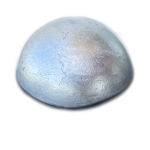
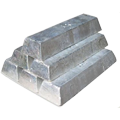
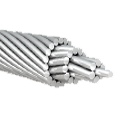
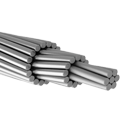
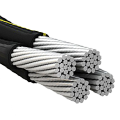

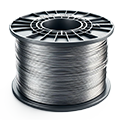








No comment